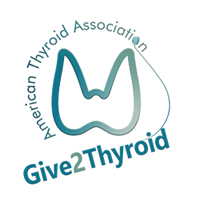BACKGROUND
Thyroid nodules are abnormal growths of thyroid cells that form lumps within the thyroid gland. These are very common as one gets older, with thyroid nodules found in up to 50% of the population over the age of 60. The majority of these nodules prove to be non-cancerous. However, data on older patients with thyroid nodules are limited, and management should not only be guided by risk of cancer of these nodules, but also by the risks of any intervention. The goal of this study was to present detailed information on the evaluation, treatment and outcome of patients with thyroid nodules who are 70 years of age or older.
THE FULL ARTICLE TITLE:
Wang Z et al. 2018 Quantitative analysis of the benefits and risk of thyroid nodule evaluation in patients ≥70 years old. Thyroid 28:4764–471. Epub 2018 Apr 2. PMID: 29608439.
SUMMARY OF THE STUDY
The study included all patients ≥70 years old who had a neck ultrasound and thyroid biopsy between 1995 and 2015 at a single academic institution. Clinical, ultrasound and histology data, as well as patient coexistent medical conditions and outcomes were collected. Overall survival was used to assist with risk-to-benefit assessment.




